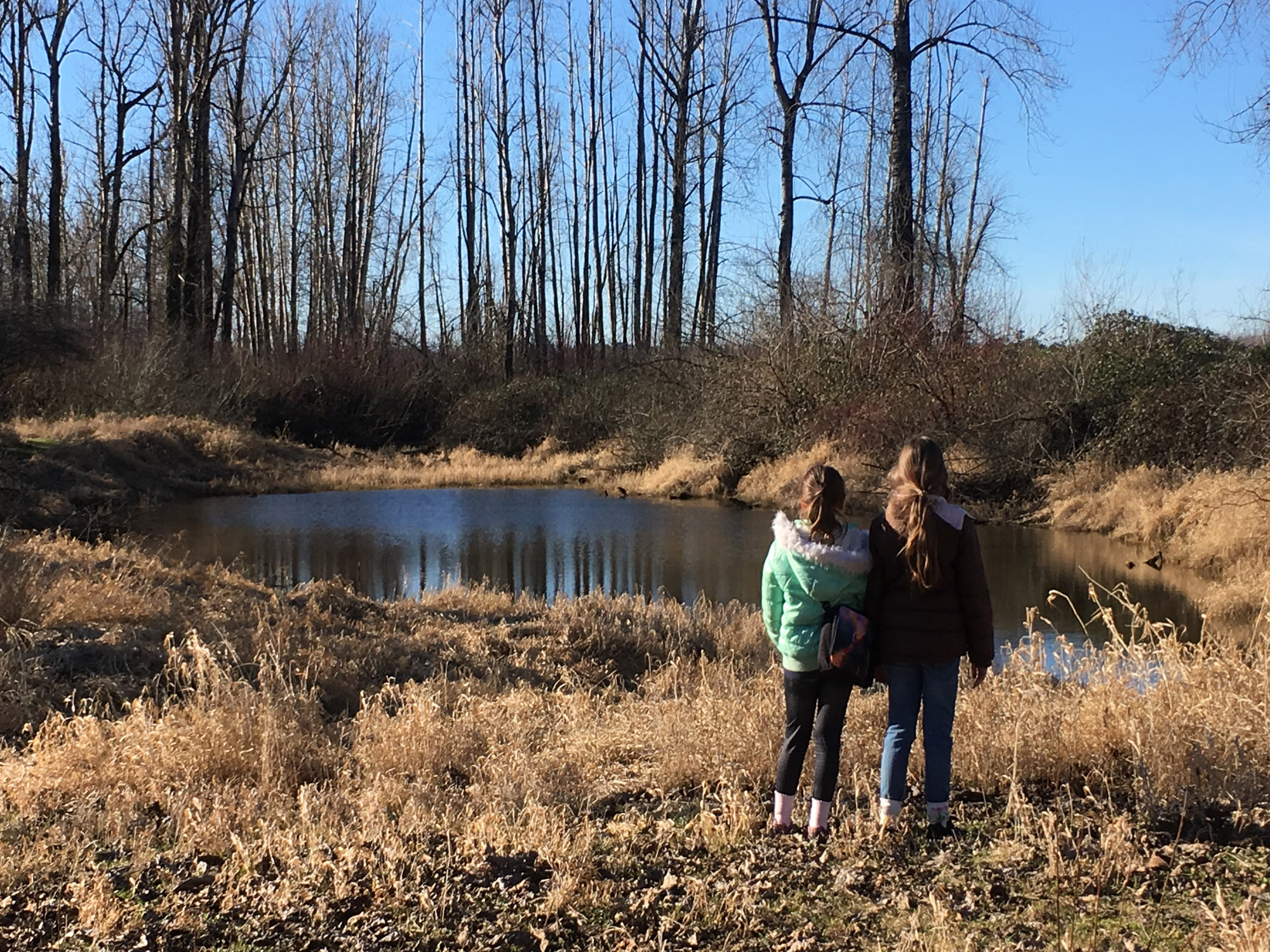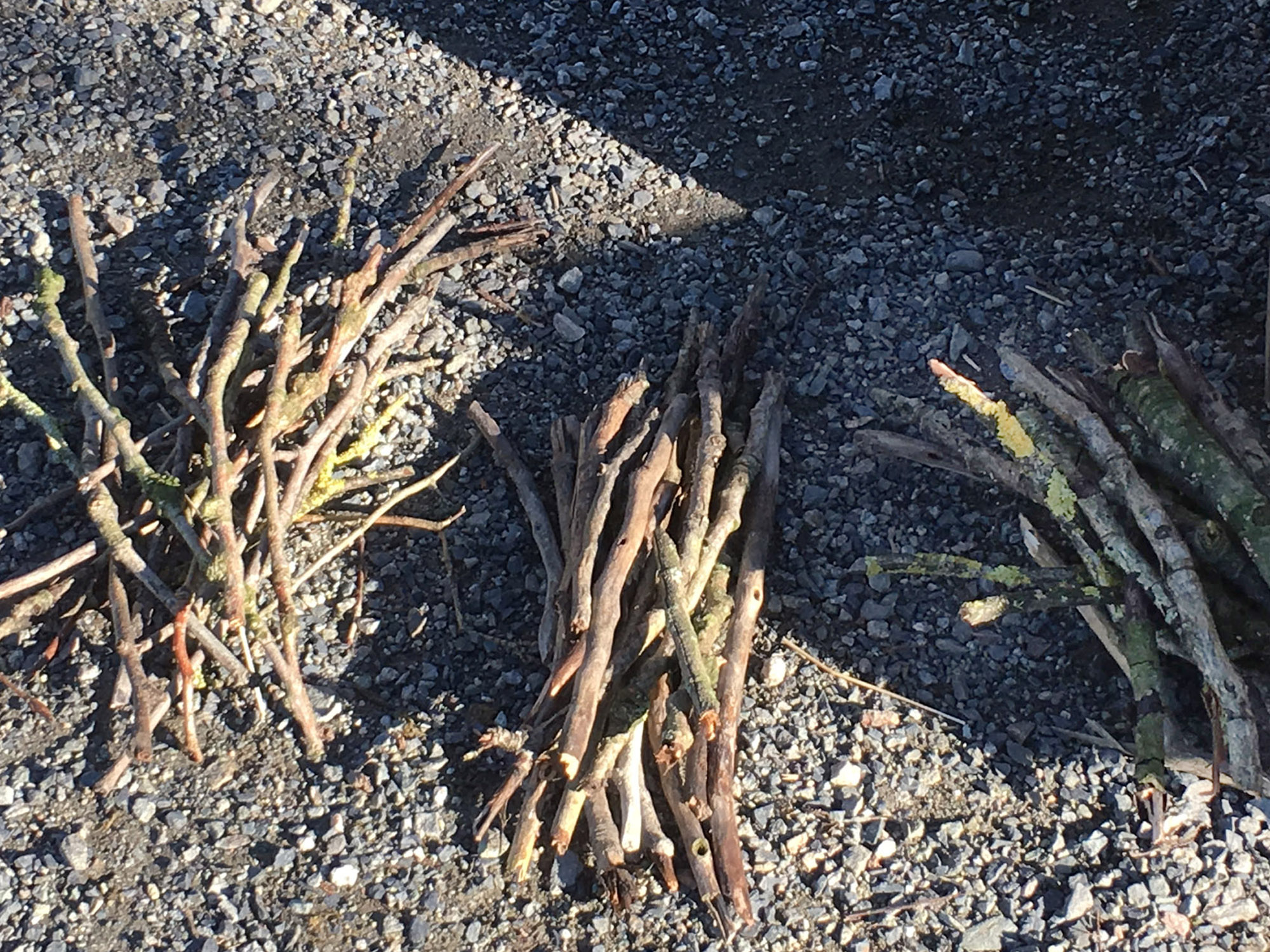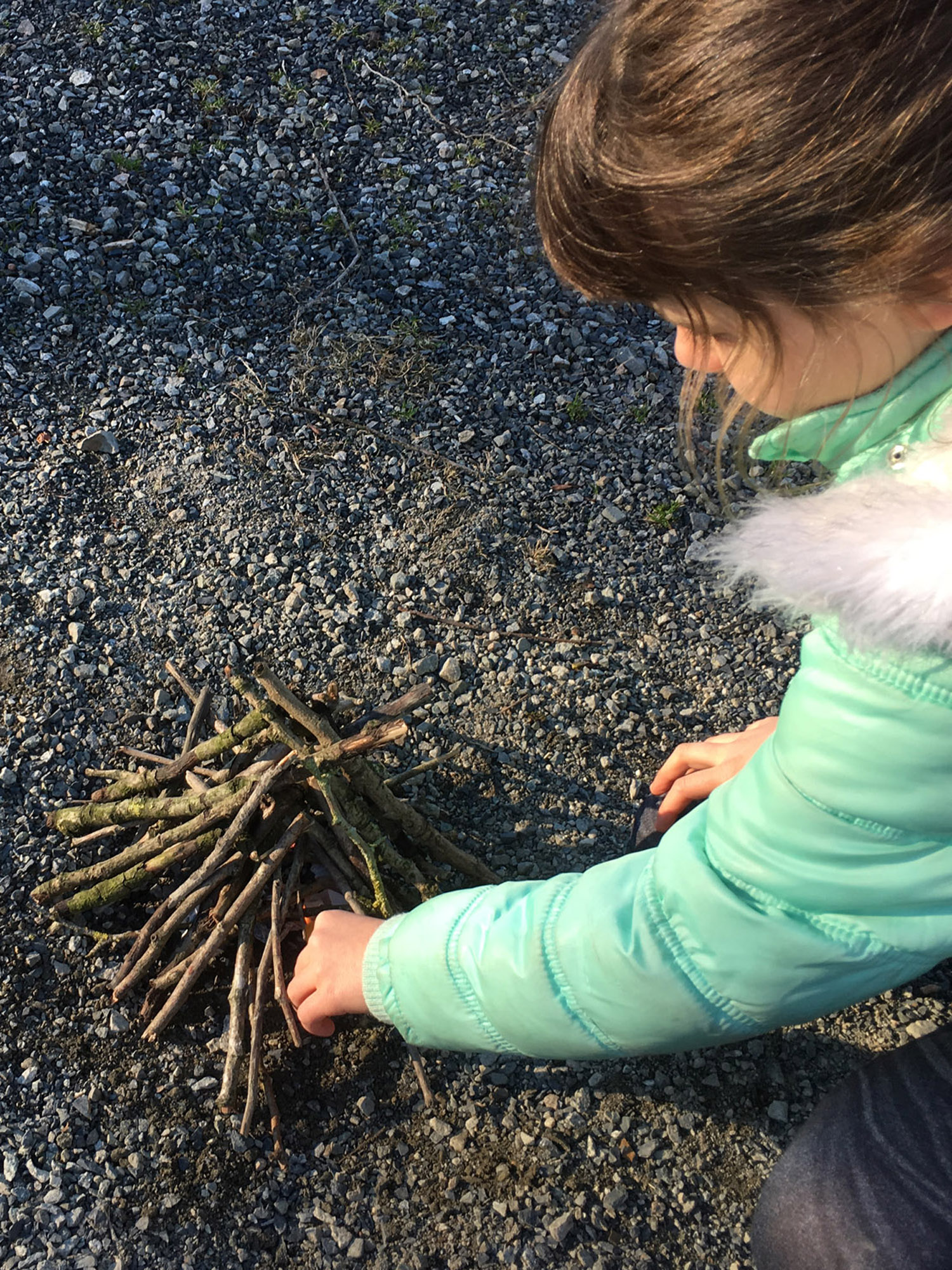Out into nature …
We’ve had a few dry days and today’s forecast was sunny with a high of 10°C, so the conditions for my plan were as perfect as you could hope for in January. And my plan? The exciting craft of building a fire.
I picked up Laureli and Cariana at 10:30 and we headed out to the Matsqui Trail Regional Park, starting just below the Mission Bridge. This trail borders the mighty Fraser River and I wasted a lot of breath trying to convince Cariana that it was not a good place to swim. Thankfully we had plenty of other things to do.
We started hiking west on the dike, encountering friendly people and dogs, but overall it felt pretty barren and exposed up there. After a little more than a kilometre, we left the high trail and headed down to the riverside. We were at a fork in the trail and decided to continue west to see if we could find the starling hordes. Sure enough, the trees were full of them. Now our challenge was to escape from the dreaded starling rain; we turned and quickly fled. With this trauma fresh in our minds, we cringed as an overhead flock of Brandt geese flew directly across our path, close enough to touch if we’d been twice as tall.


While we were eating our wraps, homemade energy bars, and Papa’s strawberry kombucha, we had an unexpected visitor – “Hey, it’s Bill!” He was biking the trail and stopped to chat. He asked the girls what fire style they were going to use. “Tepee!” they both replied.
After Bill pedalled away, Laureli asked what kinds of birds nest in tree cavities. She’s a scientist and her questions are always very intentional. It turns out that while we had been talking she spotted two heads popping in and out of a hole high in a poplar tree. With the help of her pocket scope, she identified them as Northern flickers. A wonderful discovery. Robins and juncos were also hopping about close by so we felt quite happy with our wildlife companions.


How to build a fire …
As a girl guide, I adored all the woodcraft and camping skills we practiced. One of the most important was how to safely build a small survival fire. In British Columbia the devastation of raging summer wildfires is always on our minds. We have fire bans throughout the good weather so the best time to perfect this craft is during the wet winter months.
Each of the girls was to build a small fire and light it. We had a large gravel pad to work on, so each girl hollowed out a shallow depression in the gravel, and cleared away any flammable material from the area. We also made sure our bucket of water was within easy reach. In the campsite fire pit, we tested various kinds of tinder that we had collected or brought with us. Dried grass caught quickly but had no staying power. Dead leaves didn’t ignite at all. In the end, a twisted ball of newspaper seemed the best choice.
After determining the wind direction, the girls got busy and two fires began to take shape. First the tinder, then kindling twigs over it in a tepee shape, then the slightly thicker kindling and so on, being sure to leave a little doorway for lighting. We did not plan to use any wood thicker than my thumb, because the point of the exercise was to build the fire, not keep it going for long. And the moment of truth! We were all so excited when each fire caught and the wood began to burn. They were beautiful.
The softwood kindling quickly burned down and started to smoke. We talked about fire tending. Laureli experimented with successfully bringing the coals back to life by blowing on them. Finally, we doused our fires until there was no more smoke or steam and then it was time to pack up and head home, but not before Laureli identified some of the water fowl in the river.


Foods and nutrition …
While planning this day, I spent some time puzzling over what we might successfully cook on our tiny, possibly iffy, fires. Finally I decided that one small success at a time is probably best, so I made picnic food instead. The girls stated that their gluten-free wraps were “delicious,” “amazing” and “the perfect blend” so I’m writing down what I did for future reference.
- large, brown rice tortillas
- ¼ cup chèvre, softened
- natural deli meat
- leaf lettuce
- 4 carrots – peeled and grated, fine blade
- 1 beet – peeled and grated, fine blade
- 2 cups of raw broccoli – chopped, coarse blade
Lightly flash fry each grated vegetable in butter.
Assemble the wraps:
On a large plate, cover a tortilla with a dampened paper towel and microwave 15 seconds. Spread with some of the chèvre, place a large, frilly lettuce leaf to cover the top two thirds, layer on the deli meat, then sprinkle with the lightly cooked vegetables. Fold up the bottom, then fold in the sides and pin with a fancy toothpick. Use plastic wrap to keep fresh during transport. Repeat for the number of servings needed.
There will be grated vegetables left over. They can be mixed together for a side dish, added to soup, or frozen for another use later.
Honey-Do …
Back at my house or, as Juliet calls it, my castle, we had some warm bone broth and then the girls did a quick session of Honey-Do, sweeping and swabbing our deck. We also looked at the assortment of raw materials I’ve been collecting for woodland miniature house and furniture crafting. All too soon, it was time to head home.
Recommended Book
Tom Brown Jr. with Judy Brown. Tom Brown’s Field Guide to Nature and Survival for Children.


What a lovely day for grandma and granddaughters. So happy for the new important skill the girls learned in the context of BC wildfires. Your thoughtful lesson plans, hands on experiences and relational, respectful design remind me of the perfect mini outdoor school.
Sounds like another great day outdoors with the girls. So much to see and also many learning possibilities. Seems like Laureli doesn’t miss a thing. 🙂 These are memories the girls will treasure as they get older. Great pictures.
Such a great experience for the girls. Awesome that they both had success with their fires.